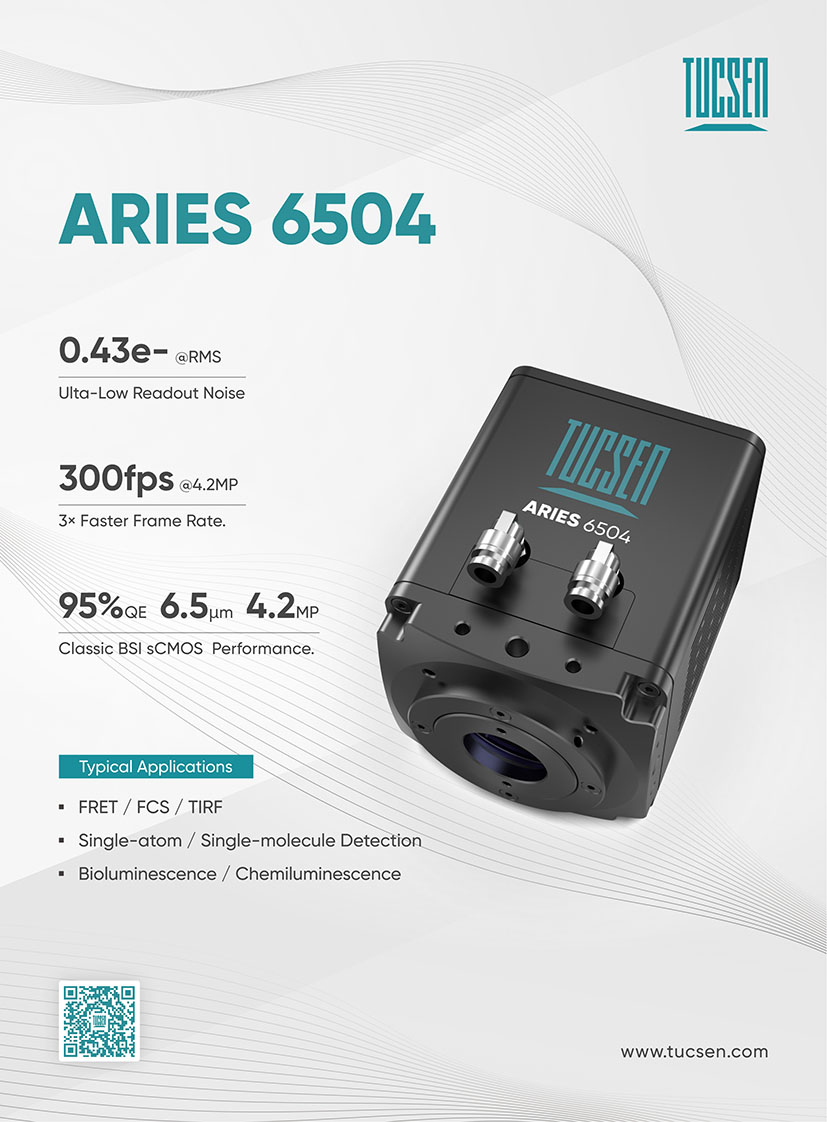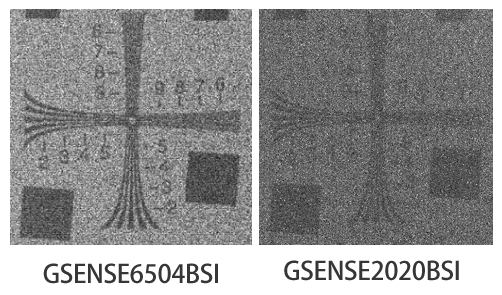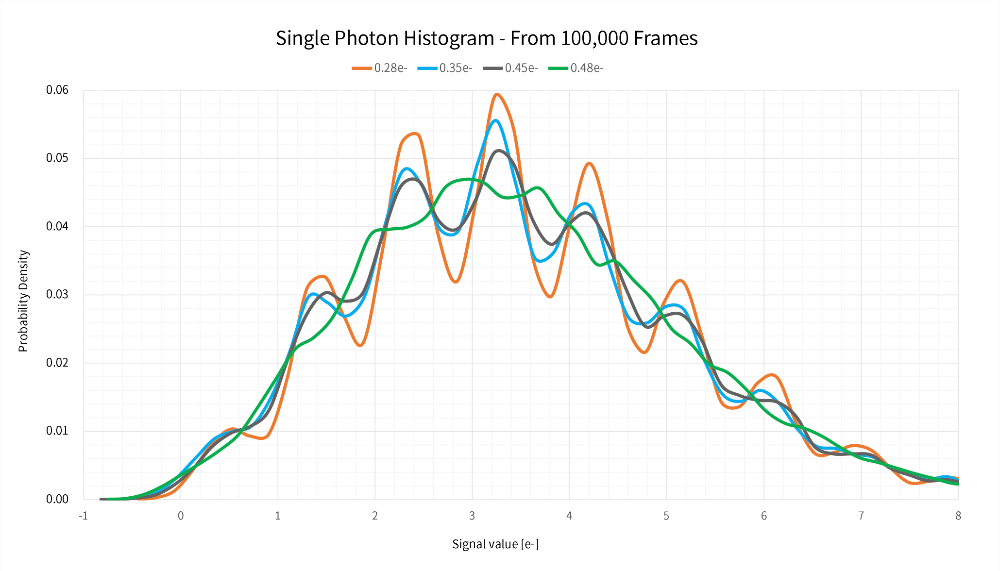The Aries 6504 camera has been designed to harness the latest in sensor technology from our partner Gpixel and will utilize their new GSENSE6504BSI sensor. The camera offers a 2048 × 2048 array of 6.5-micron back-illuminated pixels with a peak QE of 95%, speeds of up to 300 fps, and ultra-low read noise.

“Back-illuminated sCMOS is not new, and there have been several commercially available 4-megapixel models in the past; however, these have been limited in speed (40 fps in HDR) and read noise (1-1.6 electrons),” noted James Francis, Strategic & Expansion Director, “what makes the Aries 6504 special is that we can now operate at speeds of 100 fps in HDR and can even achieve an impressive 300 fps at full resolution. Combine this with ultra-low read noise, and we now have the fastest and most sensitive sCMOS camera based on a 6.5-micron pixel on the market.”

Low-light images show the difference between the GSENSE6504BSI (0.43 e⁻ read noise), featured in the Aries 6504, and the GSENSE2020BSI (1.2 e⁻), which is popular with Tucsen and other camera manufacturers.
The low read noise specification opens the door to many new applications limited by read noise permitting true EMCCD like detection capabilities,allowing scientists to detect more enabling applications that require single photon detection like quantum imaging.
Figure 1: GSENSE6504BSI is capable of single-photon detection with a noise histogram peak of 0.28 e⁻ and 0.43 e⁻ rms.

Figure 2: Single-photon detection experiment conducted using GSENSE6504BSI image sensor at −20°C die temperature and 100,000 frames. Each curve represents the response of an individual pixel, with different noise levels as indicated in the legend.
This ultra-low read noise will also help customers reduce illumination, preserve samples, or reduce exposure times, which in turn enables speed increases. This extra sensitivity should provide faster acquisition times in applications such as High Content Screening, Spatial Biology, Confocal Imaging and many forms of Spectroscopy.
In addition to 3× lower read noise, the new generation technology offers a 17× improvement in dark current performance. GSENSE6504BSI has a measured dark current of 0.004 electrons/pixel/second at −30°C (die temperature), compared to 0.07 electrons/pixel/second for the same pixel size in GSENSE2020BSI. This will undoubtedly expand the application range of sCMOS cameras in ultra-low-light, long-exposure scenarios, such as in vivo imaging of small animals and astronomical imaging.

Figure 3: Dark current comparison of GSENSE6504BSI and GSENSE2020BSI over temperature.
The GSENSE6504BSI sensor is a key part of the Aries 6504 solution. “Gpixel and Tucsen have been long-established partners for nearly two decades,” commented Lou Feng, Head of Business Development. “We integrate over 20 different Gpixel sensors and work extremely closely with their engineers to ensure we deliver the best for our customers.”
Beyond the strong collaboration work with Tucsen’s partner Gpixel, the new Aries 6504 will feature deep cooling, high-speed interfaces and critical to many of our OEM integrators, an ultra small housing.
Pricing is expected to fall in-line with existing Tucsen sCMOS products featuring the current GSENSE2020BSI sensor.
Expected timeline
Specifications online: August 2025
Accepting orders: October 2025
Delivery starts: January 2026.
About Tucsen Photonics:
Tucsen Photonics is a leading developer and manufacturer of high-performance imaging solutions for scientific and industrial applications with operations in China, Singapore, UK, USA and Europe. With a commitment to innovation and quality, Tucsen Photonics continues to redefine the possibilities of digital imaging.
Media Contact
Yuki Tang
Marketing Director
Email: yukitan@tucsen.com
Tucsen Photonics
LinkedIn: www.linkedin.com/company/tucsen
Web :www.tucsen.com


 2025/06/26
2025/06/26







